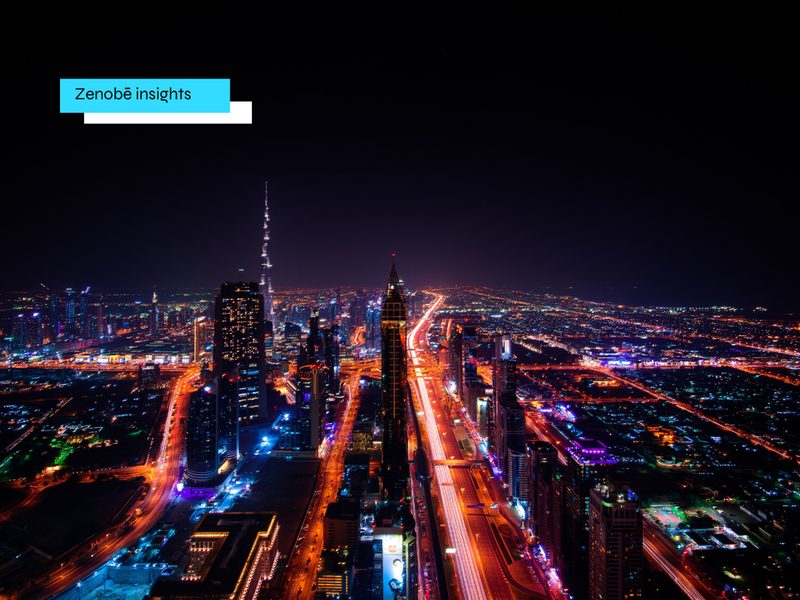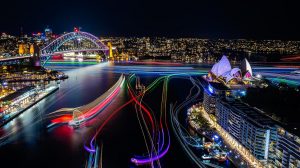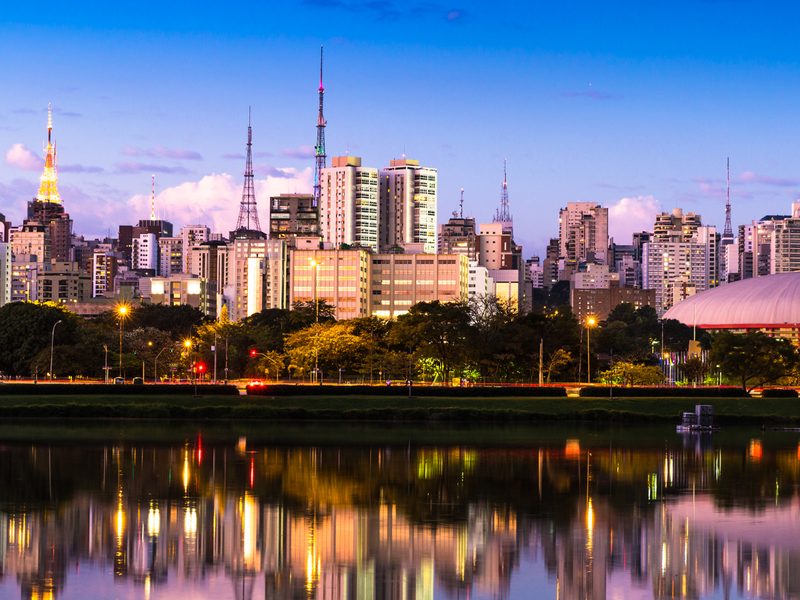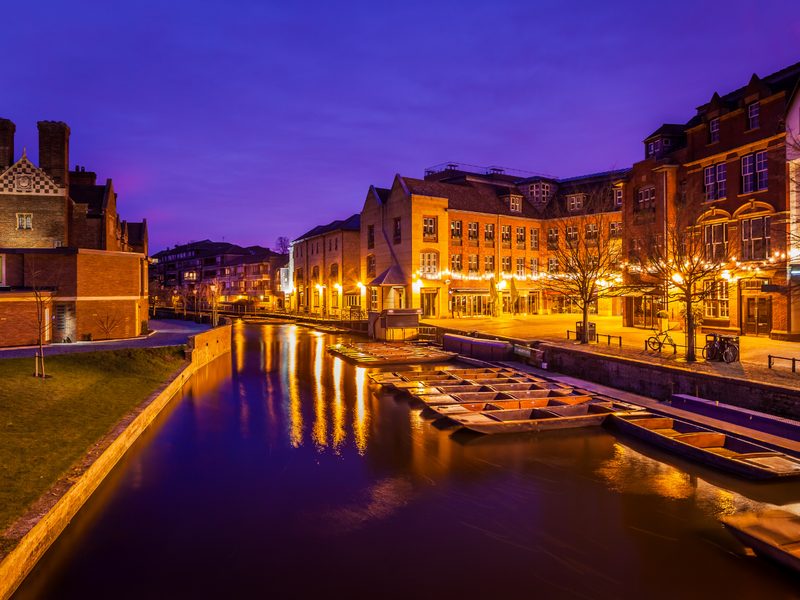Models for fleet electrification

Worldwide, local governments and bus operators have big fleet electrification ambitions – but high capital costs are an obstacle. The financial sector should step in.
Fleet decarbonisation faces many barriers, but a key blocker is the high capital costs. Rapidly, international stakeholders are developing policies and business models to overcome this barrier – so rapidly that it can be hard to keep track. In this article, we break down some of the different models that companies and governments worldwide are using to drive the transport sector’s energy transition, demonstrating the vital need for green finance and new models of private and public funding.
Let’s focus on four cities and regions at different stages of their bus electrification journeys.
01.
Shenzhen - China

Operator: Shenzhen Bus Group Co (SZBG) operates 6,000 of the 16,000 electric buses in the city, and approximately one third of the routes.
Model: public subsidies and finance leasing
Before operating such a significant percentage of Shenzhen’s e-bus fleet, SZBG faced the same key barrier that hinders so many operators from electrifying: high upfront costs. So how did it overcome it?
1. National and local government subsidies
In 2015, a national subsidy of 500,000 RMB (c. £57,000) per bus for buses longer than 10 metres was made available. Shenzhen local government matched this subsidy for all e-buses purchased locally during and before 2016. Local purchase was no problem for SZBG, as Shenzhen is the home city of BYD – the world’s largest e-bus manufacturer.
2. Financial leasing
To reduce the upfront costs of Shenzhen’s fleet transition, the public body Shenzhen Energy Conservation introduced a financial leasing model. Operators make regular payments to vehicle owners and at the end of the term, they usually buy the leased vehicles.
In Shenzhen, a finance leasing company bought 6,000 e-buses and leased them to SZBG for 8 years (the useful first life of the e-bus batteries). At the end of the contract, SZBG will take ownership of the e-buses and return the batteries to manufacturers for recycling.
Benefits:
The subsidies lowered the total cost of ownership for an e-bus to 1.07 million RMB (c. £122,000) – 36% less than a diesel bus
Having overcome the upfront costs, SZBG has been able to re-plan their routes to integrate new depots equipped for overnight charging. This has reduced its annual CO2 emissions by 440,000 tonnes, while halving its fuel bill
After a period of declining ridership, SZGB completed the full electrification of its fleet in 2017 – and its ridership numbers improved by 2.4%
Challenges:
Whilst ridership did improve, SZGB also introduced new routes and an on-demand app, making it hard to completely attribute these numbers to electrification. That said, basic truths remain:
Better services = more passengers
Electrification is key to modernising bus services for present day needs and boosting ridership
02.
Sydney and New South Wales - Australia

Operator: Transport for New South Wales (TfNSW) is the lead transport agency in the region. It aims to replace 8,300 buses with zero emissions alternatives by 2030.
Model: zero-emission contracts within franchising
Public transport in New South Wales runs on a franchising model, common across the world – from London to Singapore. TfNSW contracts operators to deliver public transport services on its behalf. As its 700 service contracts end, TfNSW will replace them with zero-emissions alternatives.
1. Short-term replacement
The first two years of this transition (2021–22) will focus on building readiness and short-term replacement to meet natural fleet renewal needs. More strategic change will accelerate from 2023 with a review in 2024. TfNSW expects peak annual deployment of 1,200-1,300 zero-emission buses.
2. Focusing on standard low-floor urban buses
TfNSW considers that of all the buses currently in operation, only standard low-floor urban buses have readily available electric replacements. As a result, it will focus initial decarbonisation efforts on routes using these buses, which are mainly in Sydney and its suburbs. Within these areas, the transition will prioritise regions where TfNSW has long-term access to key depots.
Benefits:
By signing new contracts for zero-emission services only, TfNSW will drive rapid transport decarbonisation
By aiming to decarbonise regional routes closer to 2030, TfNSW can follow learnings from trials, initial regional deployments, and reviews of emerging technologies
Starting with buses that it considers to have readily available electric replacements, TfNSW reduce the technical and operational risk of making the switch
Challenges:
As regional routes tend to be longer, they may be better suited to hydrogen technologies, rather than electric or hybrid buses. This means that further trialling and testing may be needed to meet route requirements
03.
São Paulo - Brazil

Operator: Most of the city’s 16,000 buses are operated by contractors under the management of São Paulo Transportes (SPTrans), a public company.
Model: climate legislation and franchising
São Paulo suffers from significant problems caused by traffic congestion, including increased fuel consumption, lost work hours, and above all toxic air. Concentrations of fine particulate matter (PM2.5) exceed World Health Organisation (WHO) guidelines by 60%, with lethal consequences: 52,284 deaths in 2015.
In a bid to resolve air toxicity, the congestion crisis, and the climate emergency, São Paulo’s regulatory environment is favourable to buses, including e-buses.
1. ‘Give Priority to Buses’ programme
Introduced in 2013 by then-mayor Fernando Haddad, the programme tackled congestion by installing 291km of new bus lanes.
2. Law 16.802
Passed in 2018, this legislation set targets to reduce pollution from bus fleets, mandating a 50% reduction of CO2 emissions by 2028, and a 100% reduction by 2038. It also calls for an 80% reduction of NOx and a 90% reduction of particulates by 2038.
Benefits:
The legislation powerfully incentivises decisive adoption of zero-emissions buses amongst SPTrans’ contractors. To comply with Sao Paulo’s new climate laws, 80% of all new bus purchases from 2021 will need to be zero-emission
According to our modelling, replacing a single hybrid diesel bus with an e-bus prevents the emission of 71 tonnes of CO2 per year*. So, replacing all 16,000 of São Paulo’s buses (many of which are not hybrid models) would save over 1,136,000 tonnes of CO2 every year
*Based on an average hybrid bus fuel efficiency of 2.6 kg CO2/litre and 7 mpg
Challenges:
Whilst the city’s first battery-powered buses, built in a local BYD factory, recently started running, the city will need to see faster change to hit its targets
Operators need better access to finance to cover upfront costs of e-buses and the rapid rollout of new charging infrastructure
04.
Cambridgeshire and Peterborough - United Kingdom

Operator: Cambridgeshire and Peterborough Combined Authority (CPCA)
Model: Enhanced partnerships and / or franchising, with government grant
Local Transport Authorities (LTAs) in England recently published their Bus Service Improvement Plans (BSIP) detailing the stronger role they will take through either ‘enhanced partnerships’ or, in some cases, franchising. Following the UK’s net-zero targets, LTAs have also put forward ambitious zero-emission plans.
In Cambridgeshire and Peterborough, deprivation is concentrated in rural areas with fewer traffic options, and bus services face challenges like declining use and commercial viability, inconsistency, and poor image. CPCA wants to fix this. It also has ambitious decarbonisation goals. It aims for its operations to be net zero by 2030, and for the region to hit net zero by 2050. To improve services in all areas, the authority is pursuing multiple solutions:
1. Enhanced partnerships and/or franchising
CPCA is currently undertaking a franchising assessment having published a notice of intent to explore a bus franchising model in May 2019. Franchising would enable the council to cross-subsidise between profitable and unprofitable services.
Prior to the decision on franchising, early delivery of improvements set out in their BSIP will be made under an enhanced partnership between local operators and CPCA from April 2022.
‘Enhanced partnership’ means that CPCA must gain support and input from local bus operators on its proposals, working together to improve local services in the best way for all operators and riders.
2. Government grant: ZEBRA (Zero Emission Bus Regional Areas) bids
CPCA has been awarded £4.3m in ZEBRA funds to help them buy 30 e-buses. These buses will electrify the Cambridge Park and Ride network, along with the high frequency Cambridge Citi 2 service. CPCA intends to electrify a further 150 buses by 2025, and then 40 each year until the entire fleet has been replaced.
To learn more about public and private models for funding in the UK, click here.
Benefits:
CPCA envisages that the benefits of franchising would be to:
increase CPCA’s influence over networks and fares;
Improve the consistency of the bus network;
improve services on non-commercial routes with fewer passengers;
improve integration between bus and other transport networks;
ensure value for money through competition for contracts.
What’s more:
ZEBRA funding removes some of the initial capital expenditure for the authority, allowing it to make the transition to cleaner transport sooner
Challenges:
The ZEBRA bid only covers 30 e-buses, so CPCA will need to find further funding bids to cover the cost of the new e-buses it has promised
05.
To finish
The models above illustrate the urgent need to connect private and public transport decarbonisation projects with green finance. Shenzhen Bus Company Group (SZBG) overcame funding barriers as it was able to access substantial government subsidies. Other operators working in less subsidised regulatory environments need to find alternative sources of funding.
To enable change in these places, the financial sector needs to keep pace with ambitious governments and operators. Operators will struggle to adhere to São Paulo’s new climate laws if they can’t find the money to electrify. Bus companies in New South Wales may face similar challenges to win zero-emission contracts with TfNSW, and CPCA will need more than its new ZEBRA money to achieve its fleet decarbonisation goals. So, what further solutions are there to this cross-cutting funding challenge?
As we have argued elsewhere, ‘winner takes all’ models of public funding are not driving change fast enough. We need new models that spread government funds between a wide range of organisations, while incentivising private money to come in alongside. This would help public money go further, enabling the rapid decarbonisation we need to mitigate climate disaster. We also need to develop efficient financial structures that funnel burgeoning climate finance to the organisations who need it. This last point is at the heart of Zenobē’s work: learn more here.
